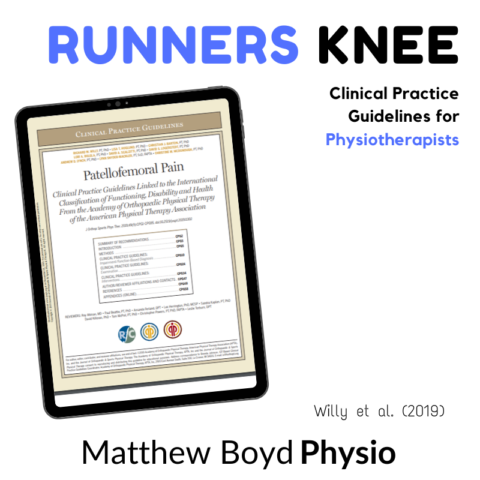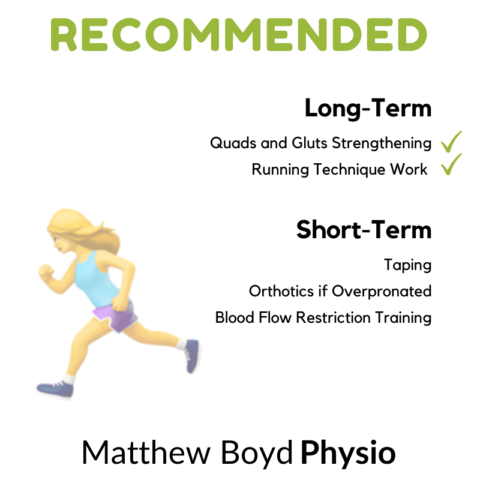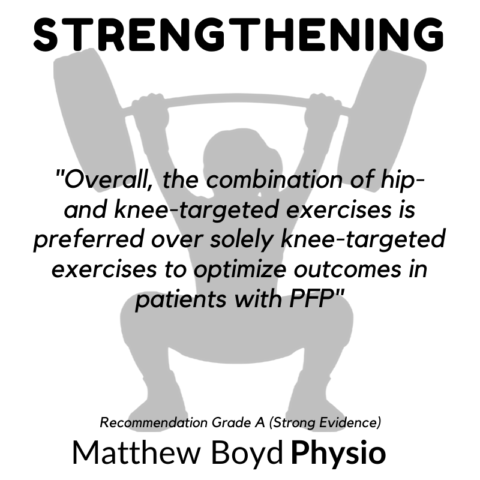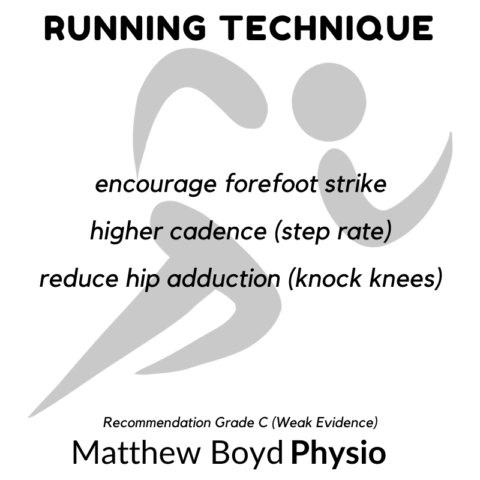Subscribe to The Adaptive Zone Podcast…
Thanks to a wonderful review from Rich Willy and his colleagues we know that we have Grade A evidence that strength training is beneficial for runner’s knee. We also know that multi-joint or compound exercises are better than exercises that isolate the knee muscles (quads and hams).
So what are good strength exercises for someone with runner’s knee? Well, we want to make the muscles stronger, but we know that the back of the kneecap is pretty angry right now. If we put too much pressure on it we’re going to make it flare-up.
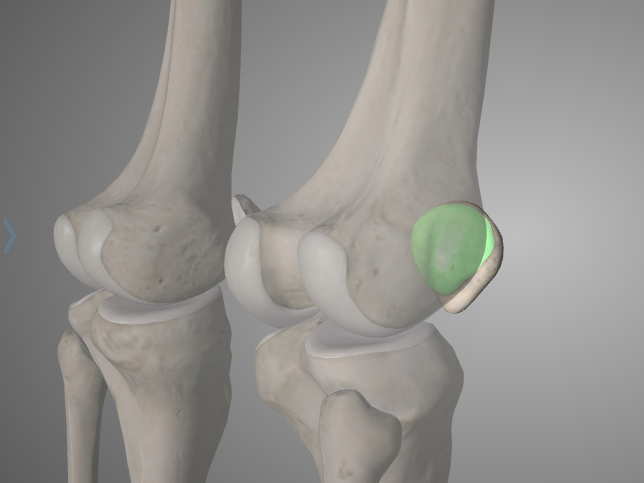
Many runners have had this experience. You have knee pain when you run, your Physiotherapist diagnoses you with patellofemoral pain (runner’s knee). They then go on to explain that patellofemoral pain is pain coming from the back of the kneecap. The back of the kneecap is under too much stress, it is unable to adapt to the stress and so it starts to hurt. You nod along, this all sounds very reasonable so far.

Then they tell you that the solution to the excess stress on the back of the kneecap is to do lunges.

Right, so how does that make sense? Obviously lunges place stress on the back of the kneecap. How is putting more stress on the back of the kneecap going to help with a problem of excess stress on the back of the kneecap?
Don’t get me wrong, lunges are an excellent exercise for people with runner’s knee. They are great for strengthening the quads, glutes and hamstrings. These are all good things for runners. You see, when we run, each step we hit the ground and experience a ground reaction force coming up through our leg. This ground reaction force can be really high. As much as 5 times our body weight in certain parts of the leg. We have to absorb that force and we only have 2 sets of tissues we can do it with.
So we can absorb that force with our joints and bones, or with our muscles and tendons. The weaker our muscles, the more stress has to go through the joints. Joints like the patellofemoral joint.
So, if we are overloading the back of the kneecap, it’s in our interest to make our muscles as strong as possible so they can absorb some of that stress. That’s why lunges are good for runner’s knee. Although they do increase the stress on the back of the kneecap, they also increase the strength of the quads, hams and glutes.
So here’s the rub. We have to make our muscles stronger, but the back of the kneecap is all sore and angry. Whenever we do some squats or lunges, it just hurts, so we stop. This is the challenge of runner’s knee.
We have to strengthen the muscles, without annoying the knee
With our strength training, as with our running volume, we have to find the adaptive zone. Not too much, not too little.

We can choose from a variety of exercises, but we learned from Rich Willy’s review that compound exercises are best. These are things like squats, lunges, leg press, deadlifts, single leg deadlifts, step ups. But we mustn’t forget the calf. Never forget the calf!
At first, you may only be able to 2-3 repetitions for 1 set. Much more than that and you go into the red light pain (your pain is more severe, it lasts for a while afterwards or it hurts more the next time). So that’s the plan, 2-3 reps, 1 set. Once a day for a few days or a week. Maybe a little more if the knee is really angry.
But which exercise!?
Well, the exercise you choose is not as important as how sore it makes the knee. Choose the exercise for which you can do at least a few repetitions without going into red light pain. For this example, let’s use a bodyweight squat. Start with just the one exercise and one set. If that’s going okay, add 1-2 more sets. When your knee is handling that okay, add some more repetitions. Try to get up to 3 sets of 15 reps without going into red light pain.
Once you can do that, add another exercise and some light weight. Once you can do those, add another exercise and some heavy weights. Once you get up to 3-4 exercises with some moderately heavy weight, you’ll notice it’s hard to do it every day. So switch to 2-3 times per week. That will give your muscles enough time to recover from the effort. In fact, this is exactly what we are going for. We want the workouts to be hard on the muscles. Hard enough to require 1-2 days of rest. It’s actually during that rest period that the body responds to the stress and makes the muscles stronger. The strength training is just a stimulus, the strengthening happens during the recovery.
Hopefully this illustrates the idea. We want to make the leg muscles stronger, without annoying the knee. That’s the goal. How we achieve that is different for every runner. When I began writing this, my intention was to write a step-by-step recipe-style program of strength exercises for runner’s knee. However, I think it would be far more helpful if I could help you understand the concept above. This is what I’m thinking when a runner comes to me with knee pain.
How can I strengthen the muscles, without annoying the knee?
Strength Exercises for Runner’s Knee
Let’s use an example to help illustrate the concept…
Carrie’s knee has been hurting for a few weeks. Mostly on the long runs. Recently, she has noticed the pain when coming down the stairs. She comes to see her very wise and somewhat handsome Physiotherapist, Matthew. Matthew diagnoses Carrie with a mild case of patellofemoral pain (runner’s knee) and informs her that strengthening her leg muscles will be the best way to reduce the stress on the back of her kneecap.
In the clinic, Matthew asks Carrie to try a few lunges. These hurt. Quite a bit, and the more she does the more it hurts. Matthew determines that this is red light pain and not acceptable. The stress on the kneecap with lunges is clearly too much and so they try some squats. Same problem. So they try some step-ups on a small step (16cm). These hurt, but only a little, and it doesn’t get worse as she continues. Carrie can manage 2 sets of 15 reps and this becomes her homework, once a day.
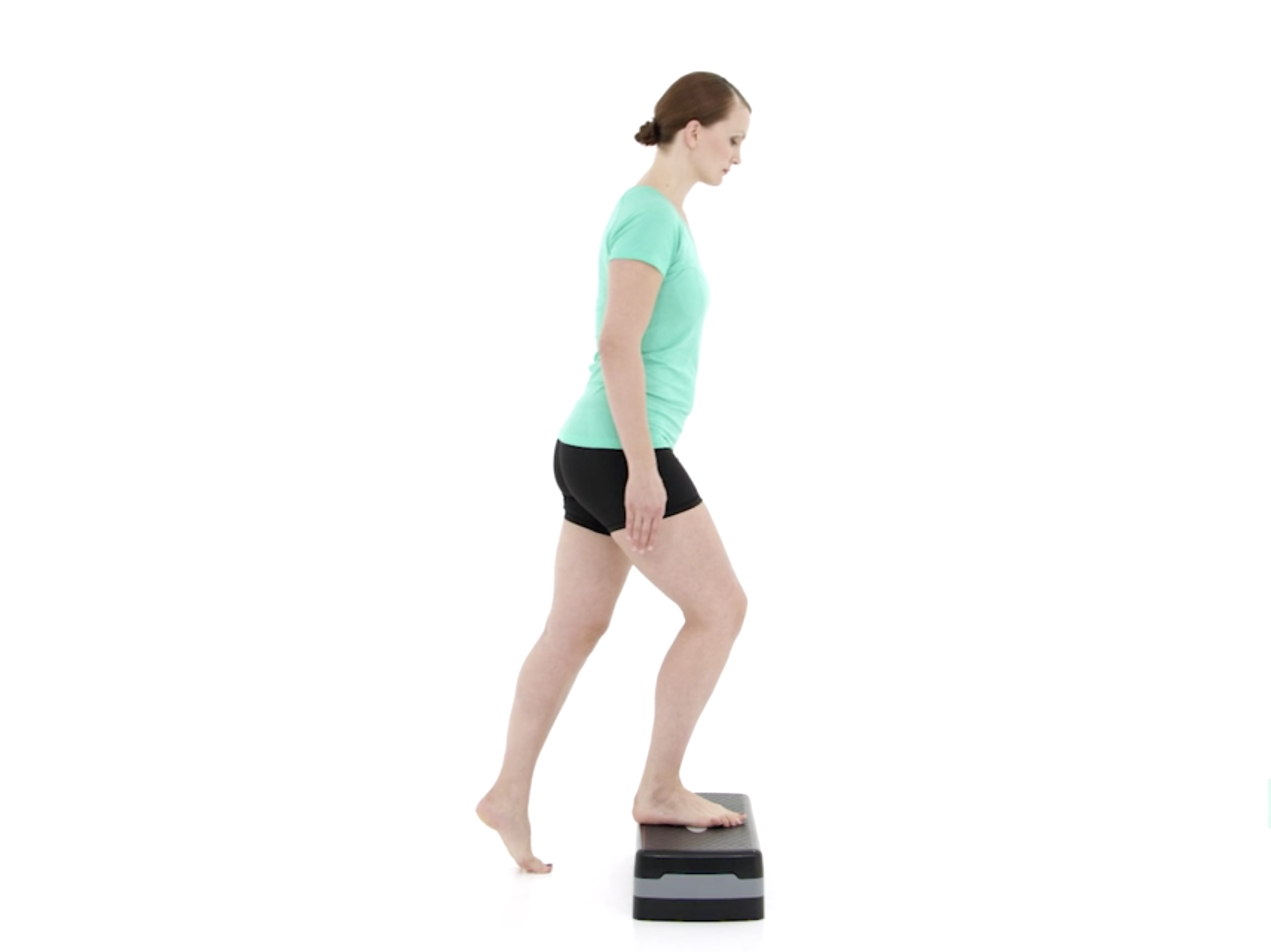
The following week Carrie returns to the clinic. She’s now able to do 4 sets of 15 with minimal pain. So it’s time to add in some strengthening of the gluteal muscles.
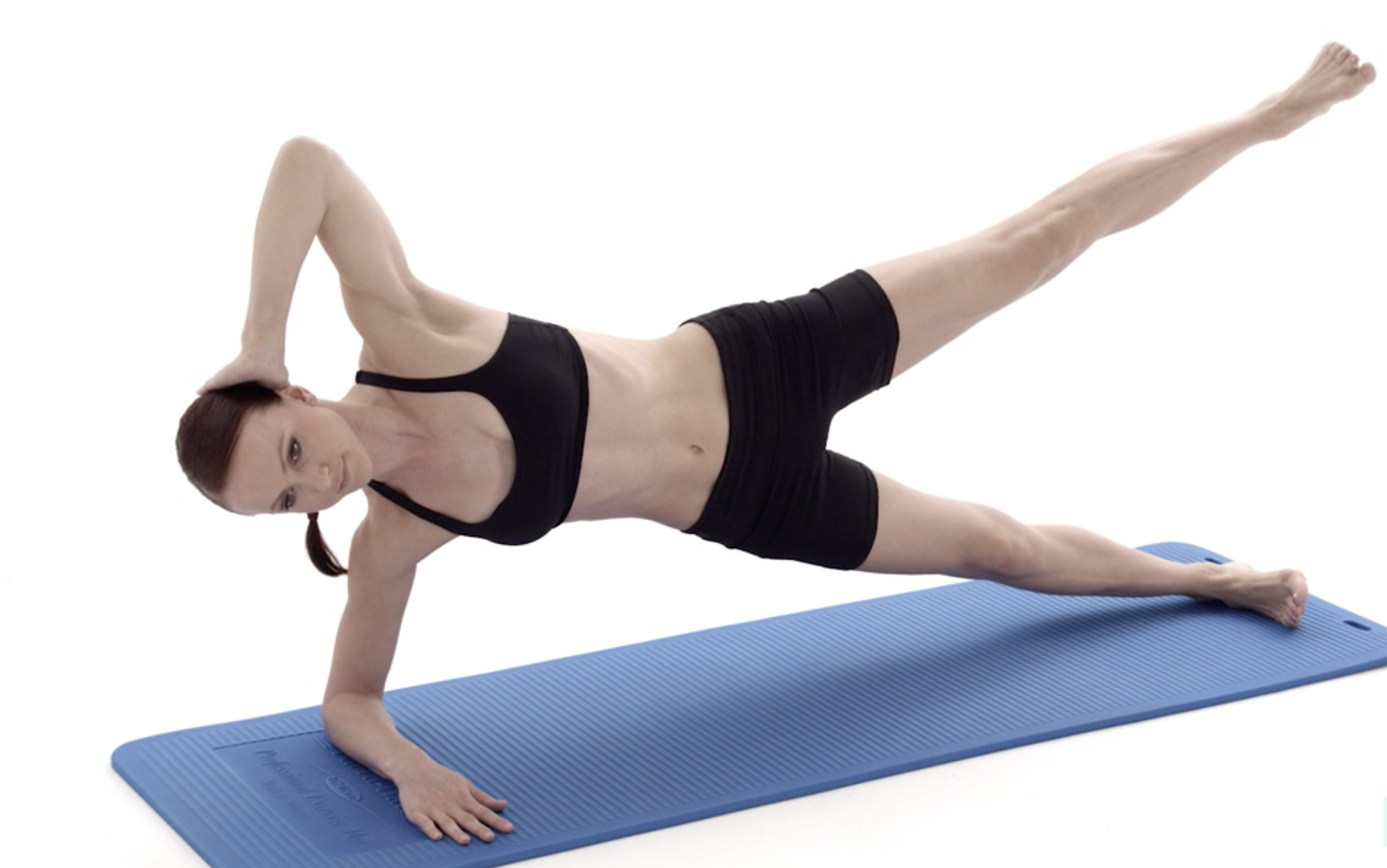
These crocodile exercises are no problem. They don’t really stress the knee and Carri can bang out 3 sets of 12. Matthew adds these to her program. Since the step ups are getting a bit easy, they try the bodyweight squats again. These still hurt, but not as much as before. Definitely orange light pain. Carri can manage 3 sets of 10 before the kneecap starts to hurt a bit more, so they are added to the program.
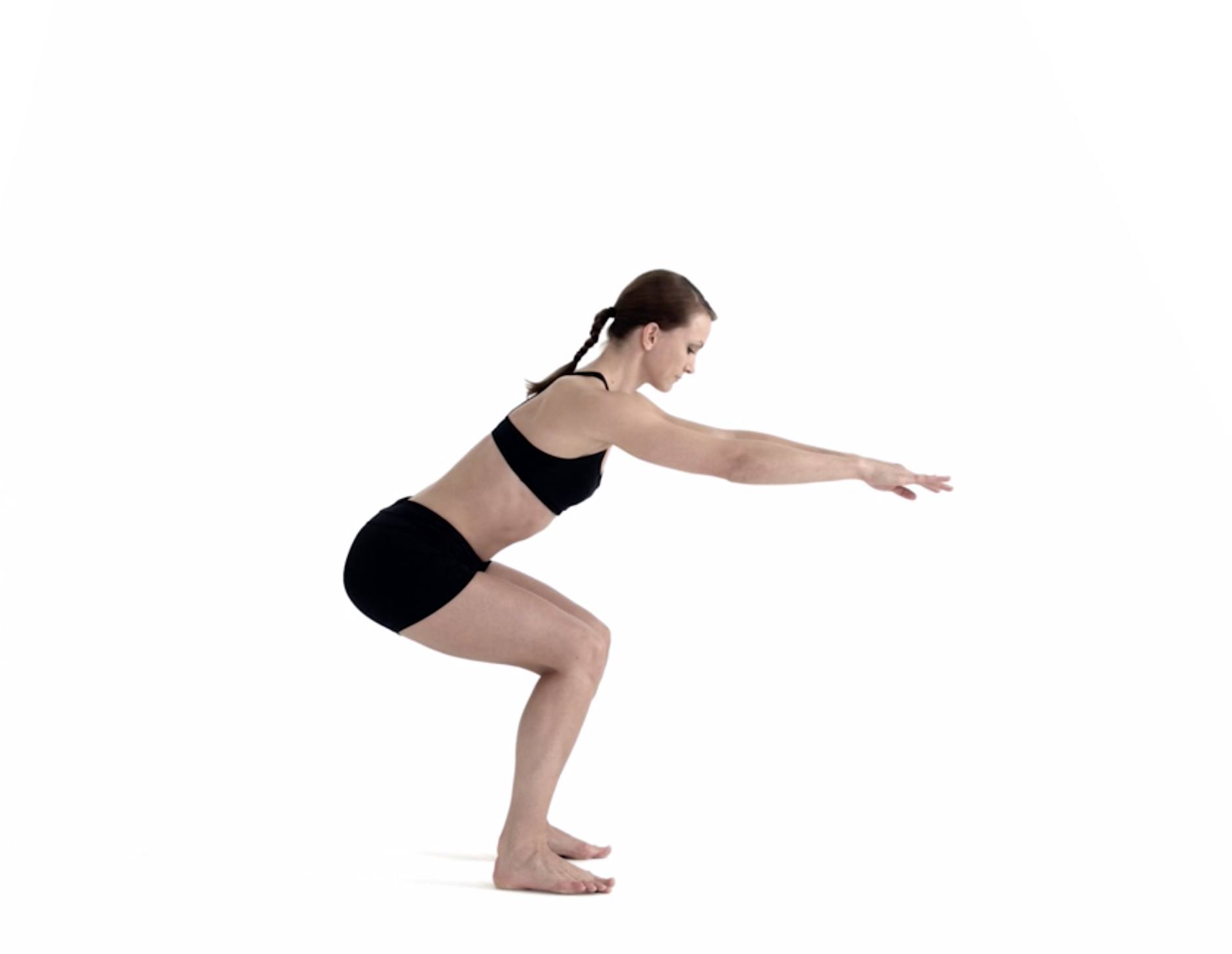
Two weeks later Carri returns. The knee is not really hurting during her exercises now, she can do 3 sets of 15 reps of all of the exercises with no pain at all. So they try some lunges, these hurt, but only a tiny amount. Not even orange light pain. Carri can do 3 sets of 15 easily. So they add some weight. Now we’re talking. With two 15 lb dumbbells, Carri can manage 3 sets of 12 before the pain in the knee starts to increase. You guessed it, that’s her homework.

Two weeks later Carrie returns to the clinic. No problem with any of the exercises. Except that the step-ups are really boring as they are too easy, so they agree to pull them from the program. Carrie’s knee is far less angry now. During this session, they can load up pretty heavy without any significant pain. After a little trial and error, Matthew and Carrie settle on four strength exercises. These are to be performed 3 times a week for 3 sets of 8 reps.
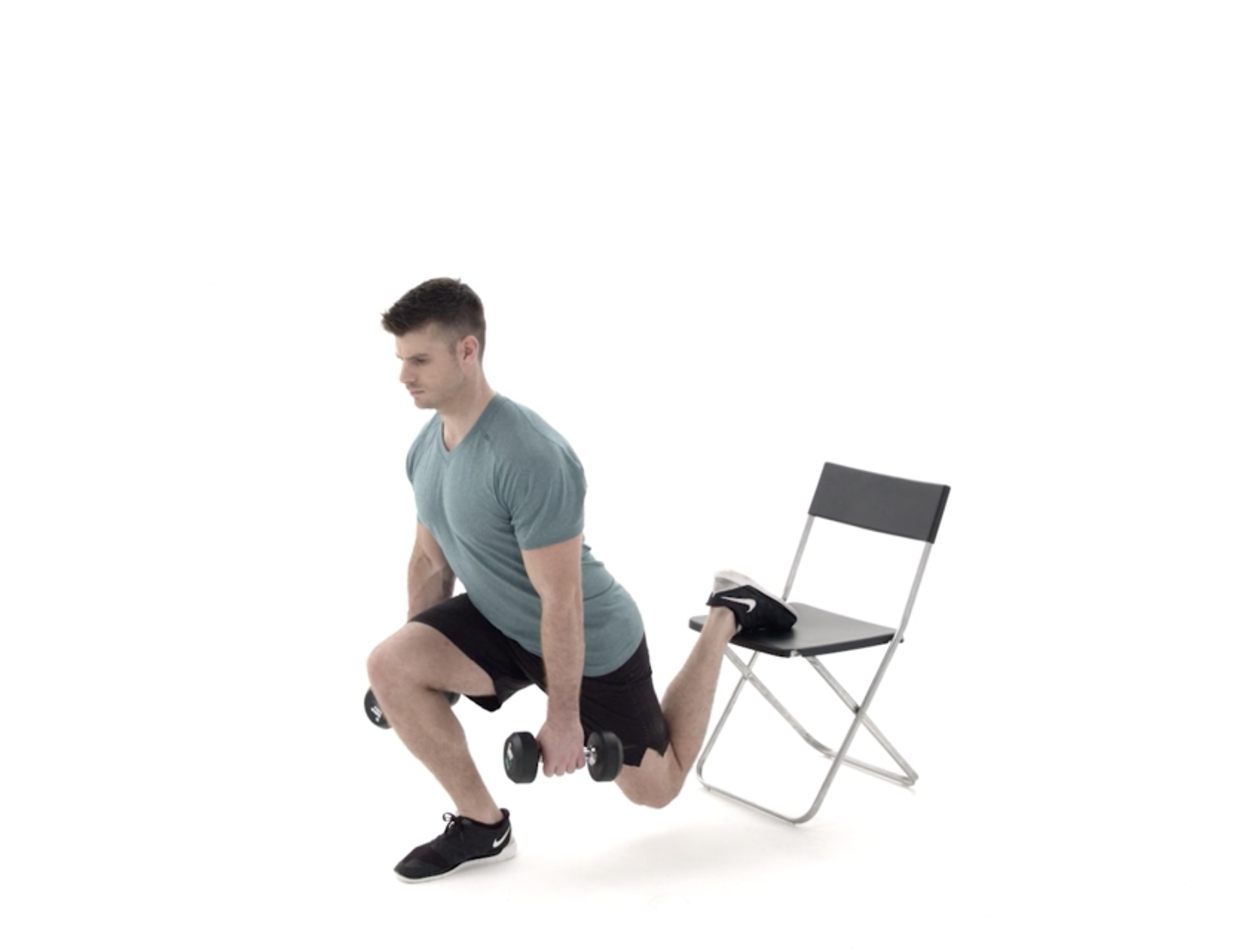
For the crocodile, Carrie wraps a resistance band around her ankles to make it harder.

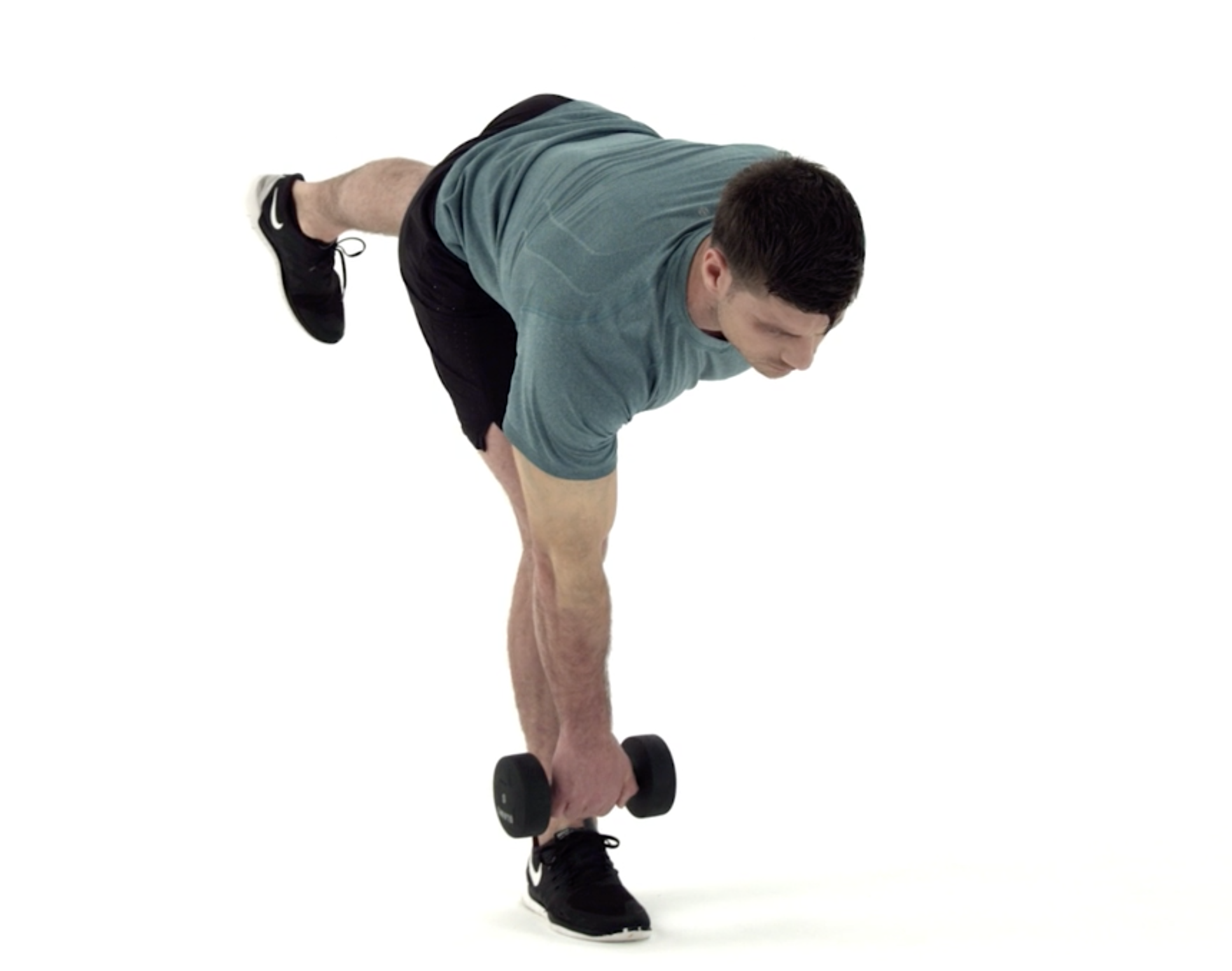
For the calf raise, Matthew has Carrie hold a 30 lb dumbbell in one hand.
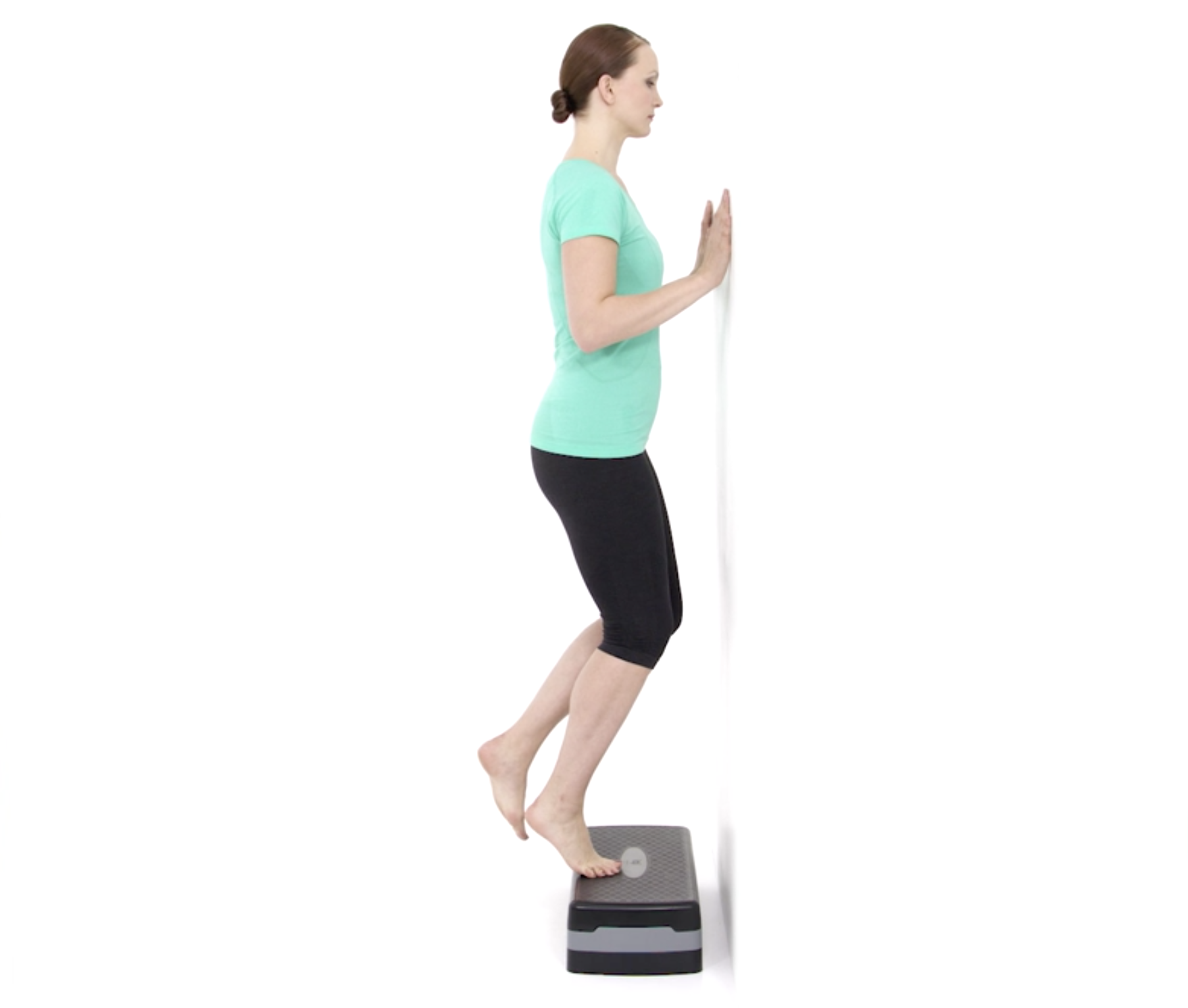
For the split squat and single leg deadlift Carrie is able to manage two 25 lb dumbbells. She can’t do more than 8 reps of each at this heavy weight. That’s exactly what we are going for. We want to progress towards sets of 5-8 rep max. “Rep max” means you can’t do any more reps at that weight. For you to tap out at 5-8 reps means the weight has to be really heavy. This will put you in the strength building zone (as opposed to hypertrophy or endurance).
Over the next few weeks, Carrie is slowly building up her running. Trying her best to stay in the adaptive zone.

She’s also adding more weight to her exercises. Now she can do 5 sets of 5 rep max with two 40 lb dumbbells for her split squats. Her knee barely grumbles at all. She is now working on strengthening her leg muscles three times a week and has managed to scale it up gradually so as not to irritate the knee.
Exactly the way to do strength exercises for runner’s knee.
